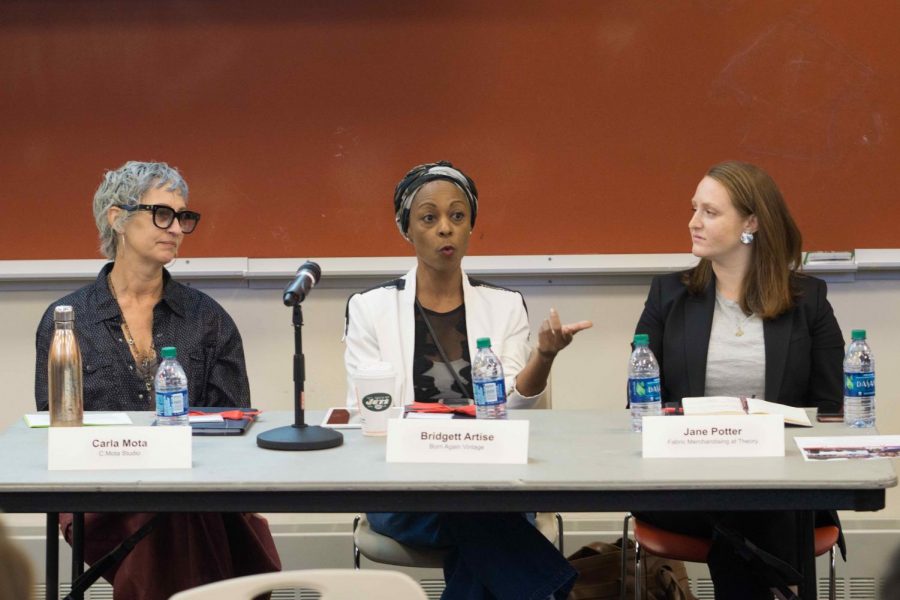Have you ever taken the time to think about what materials your clothes are made of? Or even who and what is behind the production of your clothes? Well, these were the objectives tackled during the “Careers in Sustainable Fashion” panel discussion presented by St. John’s.The panel, moderated by the chair of marketing, Dr. Iris Mohr, hosted three prominent workers from the sustainable fashion industry: Carla Mota, who has designed her own sustainable clothing brand, C. Mota Studio, Bridgett Artise, the designer of Born Again Vintage and Jane Potter, a fabric merchandising manager from the clothing brand Theory, were all present to speak about their careers in sustainable fashion and the importance of the rising industry.
All three women, who decided to go into these fields after becoming more aware of the flawed truth of unsustainable fashion, discussed how harmful the clothes we wear actually are. For instance, not many are aware of how many chemicals go into the production of their clothes, and how those clothes and chemicals sit against their skin all day. What about when someone decides to get rid of old clothing? At the end of the day, where do the articles of clothing go? What comes to be of the fabrics? Believe it or not, fashion is the second biggest contributor to pollution in the world!
Certain fabrics such as polyester and cotton not only take a lot out of the environment to make, but can be even more harmful when not disposed of in an environmentally-friendly way. That fur coat that you may be thinking about breaking out this fall may seem cute, but in reality, it wasn’t made in an environmentally friendly manner. People often buy faux fur coats thinking that they are doing a good thing for animals. However, faux fur is made with large amounts of chemically-overrun polyester fabrics.
Adding on to this, the people who produce clothes need to be considered as well, as they play a large role in the ethical issues of the fashion industry. Most of the clothes we wear are mass-produced by factory workers overseas, most prominently in China. Yes, it’s an amazing feeling to find a cute top on sale at Forever 21 for $9.75, or to come across a ‘buy one, get one deal’ at H&M, but have you ever stopped to think about the factory workers overseas who are making as little as a few cents per hour for you to have that shirt? Lots of these workers are barely making enough to support themselves, let alone their families!
Artise explained how the problem with today’s fashion industry is that we don’t even have stories about who makes our clothes anymore. In attempt to keep up with all the trends, we have become so detached from the process of fashion.
As a result, we have made mass production the norm and it shouldn’t be this way. It would be ideal for the clothing you wear should be unique and special to you; you should be able to wear it, know the designer and where it came from.
Mota explained that the first step towards a more sustainable fashion industry starts with the consumer changing their mindset. The average consumer is purchasing one product a week. If consumers were to spend less money on unsustainable brands and more on sustainable brands, the unsustainable brands would have no choice but to change.
Right now sustainable brands are more expensive because it takes more to make their clothing. The more sustainable the industry becomes, however, the more cost-efficient it becomes.
For now, if you can’t afford to shop sustainably yet, the panelists’ tip is to challenge yourself. Thrift, recycle and upcycle your clothes! Before shopping, check your closet; make sure you’re not buying something similar to what you already own.
Lastly, if you buy something, make it last in your closet for as long as possible by finding new ways to dress it up. A better and more sustainable fashion industry is possible, but it all starts with the consumer.








